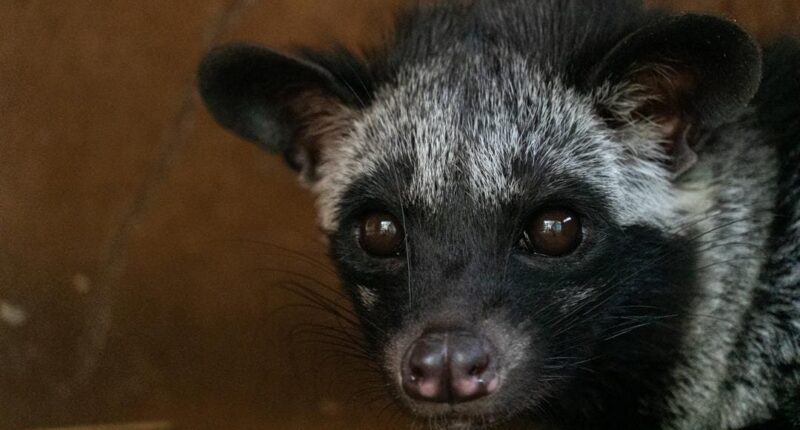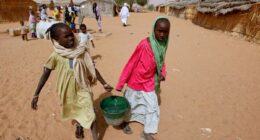Share this @internewscast.com
Civet coffee, renowned for its distinct taste and scarcity, often raises ethical concerns. Across Asia, extensive wildlife smuggling networks operate alongside various criminal enterprises. Profiteers utilize the same routes used for narcotics and human trafficking to trade in vulnerable animals like civets. Supporting the civet coffee industry inadvertently fuels this interconnected web.
The concept of sustainability is largely absent in the civet coffee industry. In the case of wild civet coffee, collecting civet droppings for coffee disrupts the natural seed dispersal processes. Although the practice of gathering droppings may seem harmless to the animals themselves, researchers suggest that the broader ecological impact warrants further investigation.
For civets on farms, life is filled with suffering. Choosing civet coffee directly correlates with the increase in poaching throughout Southeast Asia. Poachers use specially designed traps to capture unsuspecting civets, and if the animals survive, they are taken by smugglers to be sold abroad.
Should a civet perish in the trap, it becomes a source of bushmeat, which is prevalent in this region. Our observations noted a rise in demand and a widening price gap between live and dead civets around 2014, driven by the civet coffee farms in neighboring countries. While bushmeat prices remained stable, the cost of live civets significantly increased.
Vietnamese civet farms claim that their animals are bred in captivity, yet it is evident that civet smuggling from Cambodia is spurred by this industry. Once a civet arrives at a farm, it endures confinement, forced to consume large quantities of coffee cherries. In their natural habitat, civets enjoy a varied diet of mangoes and insects, roaming freely across the expansive Cardamom Forest Landscape. The stark contrast from a life of freedom to one of captivity in a factory farm is poignant.
Over the past 20 years, the Wildlife Rescue Team, initially operated by our organization and now managed directly by Cambodia’s Ministry of Agriculture, Forestry and Fisheries, has made a significant impact in combating traffickers. We acknowledge that raising awareness to reduce demand is an effective short-term solution. While progress has been made in Cambodia, smuggling remains a persistent issue. Comparing with neighboring regions where bushmeat still appears on restaurant menus, we are grateful for the advances in Cambodia and recognize the potential for further achievements. Past successes inspire continued efforts as this challenge persists.
Civets rescued from a smuggler. From the moment of capture, these animals are kept in torturous conditions.
Wildlife Alliance
Civet farms in Vietnam claim the animals they use are bred in captivity, but we know firsthand that civet smuggling in Cambodia is fueled by this industry. Once a coffee civet arrives at its facility it will live in confinement, forced to eat as many coffee cherries as its little body can process. In the wild, these animals would have a balanced diet with mangoes and insects; they would have all of the contiguous Cardamom Forest Landscape to call home. From a life trapsing about the jungle to a cog in a factory farm.
From the Wildlife Rescue Team (formerly operated by our organization by the authority of the Royal Government, but now run directly by the Ministry of Agriculture, Forestry and Fisheries) and its 20 years of thwarting the traffickers, we know that our efforts have made a quantifiable difference. We simultaneously recognize that lowering demand with improved awareness will be the effective method in the short term; the situation has improved but smuggling is still an issue. We can compare with our neighbors the region where you can still find bushmeat on restaurant menus and reflect gratefully on the progress that’s been made in Cambodia while appreciating how much more can be accomplished. Past successes can only be motivation for further work while this struggle continues.
A Civet Snare baited with pineapple.
Wildlife Alliance
Fraud Abounds
Natural production of civet coffee is limited by civet populations and the volume of coffee beans they can eat, and sadly there are only so many wild civets left. Fewer every day as more and more are poached. While coffee beans can make up a majority of a civet’s diet in coffee growing regions, demand has outstripped supply which has led to a variety of problems. Civet coffee beans can sell for hundreds of dollars a kilogram and with those margins, abuse is inevitable: pretending regular coffee is civet coffee, cutting regular beans and civet coffee to stretch supply, and mislabeling farmed civet coffee as wild civet coffee are established tactics. Researchers are proposing using chemical analysis (an ‘eNose’) to distinguish the real stuff from fraudulent blends. Even when a coffee lover is enjoying authentic civet coffee, they must wonder how it was produced and the suffering caused to the animals during this process.
A consumer can be told they’re purchasing from a regulated farm only for this to be proven incorrect, and for it to be revealed through subsequent investigations that the farm in question was force feeding the civets like foie-gras geese, the civets themselves smuggled by international traffickers. The risks are too high: civet coffee and misery are fundamentally intertwined. As poaching, trafficking, and forced feeding are all part of farmed civet coffee, regrettably it’s not so easy to assure that your blend comes from a ‘humane’ source.
We’re One Step Closer to Enjoying Civet Coffee Without the Cruelty
What hope is there to enjoy this less bitter, chocolatey, naturally sweet variant without offending one’s conscience? Reproducing the process in a bioreactor. If researchers can identify the unique chemical composition of this coffee and the biological processes that create it, everyone can enjoy endless pseudo-civet coffee without the guilt, and much more cheaply. This research has been underway for years and it’s paying off. A study recently published in Nature analyzed civet scat samples and regular coffee beans from the same region to better understand what chemical differences explain Kopi Luwak’s (civet coffee’s) beloved and unique flavor.
It’s been previously hypothesized that the digestive tract of the civet must alter the chemical composition of the coffee bean with some sort of fermentation, but the details of how remain elusive. In this study, researchers analyzed samples from the Western Ghats biodiversity hotspot in Kodagu, India, comparing unroasted beans and scat samples collected from the jungle. The sampling was conducted in the peak fruit-harvesting period of January 2025 to ensure the collection of ripe, high-quality berries and scat. The study builds on the works of others but provides key insights into the previously undiscovered biomolecular profile of civet coffee, showing higher fat content, especially with elevated amounts of caprylic acid methyl ester and capric acid methyl ester. As the authors of the study explain, these two fatty acid compounds are instrumental as flavoring and aroma agents in food, often imparting a dairy or milk-like aroma and flavor. Elevated protein, caffeine, and specific acid levels in civet beans can be attributed to digestive and fermentative processes, with the Gluconobacter genus of bacteria in the civet gut playing a key role.
This research provides more detail for the ongoing effort to humanely reproduce this delicacy, but the work must continue. These scientists give recommendations for further research: analyzing arabica bean samples (this study used robusta), further investigation into the amino acid profiles, and comparing roasted and unroasted samples to see what difference roasting makes in the final product. They continue that research into the long-term effects of drinking civet coffee should be undertaken, as could a comparison of samples from different geographical regions and ecological conditions like shade tree diversity and canopy cover. When comparing environmental factors with chemical composition, these factors could reveal meaningful ecological-chemical relationships.
Where do we stand? This study and the previous work it builds upon make great progress toward the eventual goal of enjoying superior coffee without participating in animal abuse. This market currently supports transnational criminal networks and removing this driver of civet smuggling will protect ecological integrity while subverting the smuggling networks that profit from animal trafficking.









